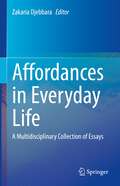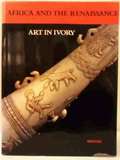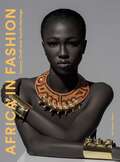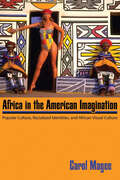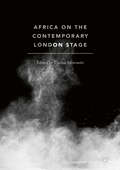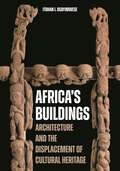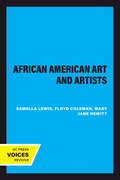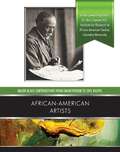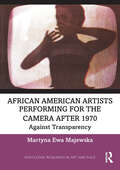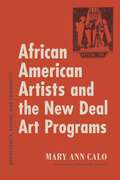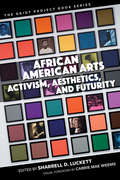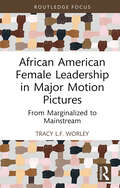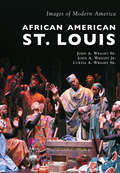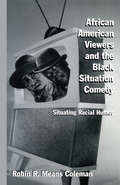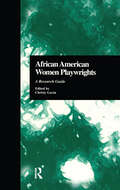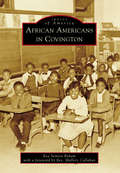- Table View
- List View
Affordances in Everyday Life: A Multidisciplinary Collection of Essays
by Zakaria DjebbaraThe concept of affordances is being increasingly used in fields beyond ecological psychology to reveal previously unexplored interdisciplinary relationships. These fields include engineering, robotics, artificial intelligence, neuroscience, urban theory, architecture, computer science, and much more. As the concept is adapted for its relational meaning between an agent and the environment, or object, the meaning of the term has changed to fit the customs of the adapting field. This book maps the different shades of the term and brings insights into how it is operationalized by providing short accessible essays regardless of background. Each contribution addresses big questions around this topic such as the application of the concept on ongoing research, how to measure or identify affordances, as well as other reflective questions about the future of affordances in the field. The book is envisioned to be read by non-experts, students, and researchers from several disciplines, and fills the need for summarization across disciplines. As the many adaptations flourished from the same psychological concept, this book also aims to function as a catalyst and motivation for reinterpreting the concepts for new directions. Compared to existing books, this book aims not to span the vertical dimension of field by taking a deep dive into a niche-field—instead, this book aims to have a wide horizontal span highlighting a common concept shared by an increasing number of fields, namely affordances. As such, this book takes a different approach by attempting to summarize the different emerging applications and definitions of the concept, and make them accessible to non-experts, students, and researchers regardless of background and level.
Afghanistan in the Cinema
by Mark GrahamIn this timely critical introduction to the representation of Afghanistan in film, Mark Graham examines the often surprising combination of propaganda and poetry in films made in Hollywood and the East. Through the lenses of postcolonial theory and historical reassessment, Graham analyzes what these films say about Afghanistan, Islam, and the West and argues that they are integral tools for forming discourse on Afghanistan, a means for understanding and avoiding past mistakes, and symbols of the country's shaky but promising future. Thoughtfully addressing many of the misperceptions about Afghanistan perpetuated in the West, Afghanistan in the Cinema incorporates incisive analysis of the market factors, funding sources, and political agendas that have shaped the films. The book considers a range of films, beginning with the 1970s epics The Man Who Would Become King and The Horsemen and following the shifts in representation of the Muslim world during the Russian War in films such as The Beast and Rambo III. Graham then moves on to Taliban-era films such as Kandahar, Osama, and Ellipsis, the first Afghan film directed by a woman. Lastly, the book discusses imperialist nostalgia in films such as Charlie Wilson's War and destabilizing visions represented in contemporary works such as The Kite Runner.
Africa and the Renaissance: Art in Ivory
by Ezio Bassani William B. FaggThe first objects from Black Africa to reach European collections were ivories brought from West Africa to Portugal in the last years of the fifteenth century. Records of import duties paid at Lisbon for the year 1504-05
Africa in Fashion: Luxury, Craft and Textile Heritage
by Ken Kweku NimoAfrica in Fashion explores the kaleidoscope of craft cultures that have shaped African fashion for centuries and captures the intriguing stories of contemporary and avant-garde African brands.Part One looks at Africa's rich cultural heritage and place in the network of global fashion. The first chapter retells the history of African fashion, exploring Africa's textile traditions, artisanship and role as a global resource. The second chapter presents a New Africa and examines the promise and potential of Africa's markets, while challenging stereotypes and the concept of European hegemony particularly in the realm of luxury fashion. It also spotlights Africa's unique position as the global industry shifts towards a more sustainable future. Part Two ushers the reader into the spectacular world of African fashion today. It showcases a carefully curated set of the continent's most dynamic brands and, through interviews with prominent and inspiring designers, offers rare insight into their ethos and design practice. Covering unisex fashion, menswear, womenswear, accessories and jewellery the brands are each purposefully selected to contribute uniquely to the mosaic of Africa evolving creative landscape.
Africa in Fashion: Luxury, Craft and Textile Heritage
by Ken Kweku NimoAfrica in Fashion explores the kaleidoscope of craft cultures that have shaped African fashion for centuries and captures the intriguing stories of contemporary and avant-garde African brands.Part One looks at Africa's rich cultural heritage and place in the network of global fashion. The first chapter retells the history of African fashion, exploring Africa's textile traditions, artisanship and role as a global resource. The second chapter presents a New Africa and examines the promise and potential of Africa's markets, while challenging stereotypes and the concept of European hegemony particularly in the realm of luxury fashion. It also spotlights Africa's unique position as the global industry shifts towards a more sustainable future. Part Two ushers the reader into the spectacular world of African fashion today. It showcases a carefully curated set of the continent's most dynamic brands and, through interviews with prominent and inspiring designers, offers rare insight into their ethos and design practice. Covering unisex fashion, menswear, womenswear, accessories and jewellery the brands are each purposefully selected to contribute uniquely to the mosaic of Africa evolving creative landscape.
Africa in the American Imagination: Popular Culture, Racialized Identities, and African Visual Culture
by Carol MageeIn the American world, the presence of African culture is sometimes fully embodied and sometimes leaves only a trace. Africa in the American Imagination: Popular Culture, Racialized Identities, and African Visual Culture explores this presence, examining Mattel's world of Barbie, the 1996 Sports Illustrated swimsuit issue, and Disney World, each of which repackages African visual culture for consumers. Because these cultural icons permeate American life, they represent the broader U.S. culture and its relationship to African culture. This study integrates approaches from art history and visual culture studies with those from culture, race, and popular culture studies to analyze this interchange. Two major threads weave throughout. One analyzes how the presentation of African visual culture in these popular culture forms conceptualizes Africa for the American public. The other investigates the way the uses of African visual culture focuses America's own self-awareness, particularly around black and white racialized identities. In exploring the multiple meanings that “Africa” has in American popular culture, Africa in the American Imagination argues that these cultural products embody multiple perspectives and speak to various sociopolitical contexts: the Cold War, civil rights, and contemporary eras of the United States; the apartheid and post-apartheid eras of South Africa; the colonial and postcolonial eras of Ghana; and the European era of African colonization.
Africa on the Contemporary London Stage
by Tiziana MorosettiThis collection of essays investigates the way Africa has been portrayed on the London stage from the 1950s to the present. It focuses on whether — and, if so, to what extent — the Africa that emerges from the London scene is subject to stereotype, and/or in which ways the reception of audiences and critics have contributed to an understanding of the continent and its arts. The collection, divided into two parts, brings together well-established academics and emerging scholars, as well as playwrights, directors and performers currently active in London. With a focus on Wole Soyinka, Athol Fugard, Bola Agbaje, Biyi Bandele, and Dipo Agboluaje, amongst others, the volume examines the work of key companies such as Tiata Fahodzi and Talawa, as well as newer companies Two Gents, Iroko Theatre and Spora Stories. Interviews with Rotimi Babatunde, Ade Solanke and Dipo Agboluaje on the contemporary London scene are also included.
Africa's Buildings: Architecture and the Displacement of Cultural Heritage
by Itohan I. OsayimweseA groundbreaking history of Africa&’s looted architectural heritage—and a bold proposal for the repatriation of the continent&’s stolen cultural artifactsBetween the nineteenth century and today, colonial officials, collectors, and anthropologists dismembered African buildings and dispersed their parts to museums in Europe and the United States. Most of these artifacts were cataloged as ornamental art objects, which erased their intended functions, and the removal of these objects often had catastrophic consequences for the original structures. Africa&’s Buildings traces the history of the collection and distribution of African architectural fragments, documenting the brutality of the colonial regimes that looted Africa&’s buildings and addressing the ethical questions surrounding the display of these objects.Itohan Osayimwese ranges across the whole of Africa, from Egypt in the north to Zimbabwe in the south, and spanning the western, central, and eastern regions of the continent. She describes how collectors employed violent means to remove elements such as columns and door panels from buildings, and how these methods differentiated architectural collecting from conventional collecting. She shows how Western collectors mischaracterized building components as ornament, erasing their architectural character and concealing the evidence of their theft. Osayimwese discusses how the very act of displacing building parts like floor tiles and woven screen walls has resulted in a loss of knowledge about their original function and argues that because of these removals, scholars have yet to fully grasp the variety and character of African architecture.Richly illustrated, Africa&’s Buildings uncovers the vast scale of cultural displacement perpetrated by the West and proposes a new role for museums in this history, one in which they champion the repatriation of Africa&’s architectural heritage and restitution for African communities.
African Accents: A Workbook for Actors
by Beth McGuireThis is a comprehensive workbook for actors, covering the key characteristics and profiles of a wide range of African accents of English. Its unique approach not only addresses the methods and processes by which to go about learning an accent, but also looks in detail at each example. This lets the reader plot their own route through the learning process and tailor not only their working methods but also their own personal idiolect. Full breakdowns of each accent cover: an introduction giving a brief history of the accent, its ethnic background, and its language of origin preparatory warm-up exercises specific to each accent a directory of research materials including documentaries, plays, films and online resources key characteristics such as melody, stress, pace and pitch descriptions of physical articulation in the tongue, lips, jaw, palate and pharynx practice sentences, phoneme tables and worksheets for solo study. African Accents is accompanied by a website at www.routledge.com/cw/mcguire with an extensive online database of audio samples for each accent. The book and audio resources guide actors to develop their own authentic accents, rather than simply to mimic native speakers. This process allows the actor to personalize an accent, and to integrate it into the creation of character rather than to play the accent on top of character.
African American Architects: A Biographical Dictionary, 1865-1945
by Dreck Spurlock WilsonAfrican-American architects have been designing and building houses and public buildings since 1865. Although many of these structures survive today, the architects themselves are virtually unknown. This unique reference work brings their lives and work to light for the first time. Written by 100 experts ranging from architectural historians to archivists, this book contains 160 biographical, A-Z entries on African-American architects from the era of Emancipation to the end of World War II. Articles provide biographical facts about each architect, and commentary on his or her work. Practical and accessible, this reference is complemented by over 200 photographs and includes an appendix containing a list of buildings by geographic location and by architect.
African American Art and Artists
by Samella LewisSamella Lewis has brought African American Art and Artists fully up to date in this revised and expanded edition. The book now looks at the works and lives of artists from the eighteenth century to the present, including new work in traditional media as well as in installation art, mixed media, and digital/computer art. Mary Jane Hewitt, an author, curator, and longtime friend of Samella Lewis's, has written an introduction to the new edition. Generously and handsomely illustrated, the book continues to reveal the rich legacy of work by African American artists, whose art is now included in the permanent collections of national and international museums as well as in major private collections.
African American Artists (Major Black Contributions from Emancipat)
by Carol EllisFrom quilts to marble, from comic strips to welded steel, African Americans have created exciting works of art for more than a hundred years. African-American Artists traces the struggles and shows the work of many of these men and women. This book will introduce you to Harriet Powers, who was born a slave and who told legends and stories on her quilts. You'll meet Horace Pippin, who taught himself to paint and kept painting even after he lost the use of his arm. Cartoonist Aaron McGruder and digital artist Angela Perkins are among the African-American artists who continue to enrich the nation's culture today.
African American Artists Performing for the Camera After 1970: Against Transparency (Routledge Research in Art and Race)
by Martyna Ewa MajewskaThis study demonstrates how African American artists active since the 1970s have instrumentalized performance for the camera to intervene in existing representations of Black and Brown people in America and beyond.Majewska argues that producing carefully designed photographs, films, and videos via performance became a key strategy for dismantling the conceptions of race and gender fixed by US popular culture, jurisprudence, and pseudoscience. Studying the work of Adrian Piper, Glenn Ligon, Lyle Ashton Harris, Senga Nengudi, Maren Hassinger, Howardena Pindell, David Hammons, and Pope.L, this book examines the ways in which these artists incorporate their bodies and personal experience into their respective performances, simultaneously courting and foreclosing autobiographical readings. The strategies examined here, while diverse, all challenge conventional interpretations of performance art—especially those overdetermined by race, gender, and sexuality.The book will be of interest to scholars working in art history, performance studies, photography, and African American studies.
African American Artists and the New Deal Art Programs: Opportunity, Access, and Community
by Mary Ann CaloThis book examines the involvement of African American artists in the New Deal art programs of the 1930s. Emphasizing broader issues informed by the uniqueness of Black experience rather than individual artists’ works, Mary Ann Calo makes the case that the revolutionary vision of these federal art projects is best understood in the context of access to opportunity, mediated by the reality of racial segregation.Focusing primarily on the Federal Art Project (FAP) of the Works Progress Administration (WPA), Calo documents African American artists’ participation in community art centers in Harlem, in St. Louis, and throughout the South. She examines the internal workings of the Harlem Artists’ Guild, the Guild’s activities during the 1930s, and its alliances with other groups, such as the Artists’ Union and the National Negro Congress. Calo also explores African American artists’ representation in the exhibitions sponsored by WPA administrators and the critical reception of their work. In doing so, she elucidates the evolving meanings of the terms race, culture, and community in the interwar era. The book concludes with an essay by Jacqueline Francis on Black artists in the early 1940s, after the end of the FAP program.Presenting essential new archival information and important insights into the experiences of Black New Deal artists, this study expands the factual record and positions the cumulative evidence within the landscape of critical race studies. It will be welcomed by art historians and American studies scholars specializing in early twentieth-century race relations.
African American Arts: Activism, Aesthetics, and Futurity (The Griot Project Book Series)
by Sharrell D. Luckett Carmen Gillespie Rikki Byrd Amber Lauren Johnson Doria E. Charlson Florencia V. Cornet Daniel McNeil Lucy Caplan Genevieve Hyacinthe Sammantha McCalla Nettrice R. Gaskins Abby Dobson J. Michael Kinsey Shondrika Moss-Bouldin Julie B. Johnson Jasmine Eileen Coles Tawnya Pettiford-Wates Rickerby HindsSignaling such recent activist and aesthetic concepts in the work of Kara Walker, Childish Gambino, BLM, Janelle Monáe, and Kendrick Lamar, and marking the exit of the Obama Administration and the opening of the National Museum of African American History and Culture, this anthology explores the role of African American arts in shaping the future, and further informing new directions we might take in honoring and protecting the success of African Americans in the U.S. The essays in African American Arts: Activism, Aesthetics, and Futurity engage readers in critical conversations by activists, scholars, and artists reflecting on national and transnational legacies of African American activism as an element of artistic practice, particularly as they concern artistic expression and race relations, and the intersections of creative processes with economic, sociological, and psychological inequalities. Scholars from the fields of communication, theater, queer studies, media studies, performance studies, dance, visual arts, and fashion design, to name a few, collectively ask: What are the connections between African American arts, the work of social justice, and creative processes? If we conceive the arts as critical to the legacy of Black activism in the United States, how can we use that construct to inform our understanding of the complicated intersections of African American activism and aesthetics? How might we as scholars and creative thinkers further employ the arts to envision and shape a verdant society? Contributors: Carrie Mae Weems, Carmen Gillespie, Rikki Byrd, Amber Lauren Johnson, Doria E. Charlson, Florencia V. Cornet, Daniel McNeil, Lucy Caplan, Genevieve Hyacinthe, Sammantha McCalla, Nettrice R. Gaskins, Abby Dobson, J. Michael Kinsey, Shondrika Moss-Bouldin, Julie B. Johnson, Sharrell D. Luckett, Jasmine Eileen Coles, Tawnya Pettiford-Wates, Rickerby Hinds. Published by Bucknell University Press. Distributed worldwide by Rutgers University Press.
African American Bryan, Texas: Celebrating the Past (American Heritage)
by Oswell Person PhDBryan was incorporated in 1872, but it would take more than ten years before its African American population was offered schooling. Nothing would come easy for them, but they persevered through hard work, ingenuity and family support. The success of today's generation is a direct result of determined, hardworking pioneers like Dr. Samuel J. Sealey Sr., Bryan's "baby doctor" in the 1930s and '40s, and Dr. William A. Hammond Sr., who opened Bryan's first black hospital and employed many blacks through his business ventures. Learn about the inspiration and guidance provided by the likes of Oliver Wayne Sadberry, an outstanding community leader and principal of Fairview and Washington Elementary. Dr. Oswell Person shares the story of this community's achievements, successes and contributions in the face of incredible odds.
African American Cinema through Black Lives Consciousness
by Mark A. Reid Gerald R. Butters Jr. Karen Bowdre African American Cinema Dan Flory African American Cinema Mark D Cunningham African American Cinema Patricia Hilliard-Nunn African American Cinema Kimberly Nichele Brown African American Cinema Chesya Burke African American Cinema Anne Cremieux African American Cinema James Smalls Charlene Regester Dr Jonathan Munby Dr Melba Joyce BoydAfrican American Cinema through Black Lives Consciousness uses critical race theory to discuss American films that embrace contemporary issues of race, sexuality, class, and gender. Its linear history chronicles black-oriented narrative film from post–World War II through the presidential administration of Barack Obama. Editor Mark A. Reid has assembled a stellar list of contributors who approach their film analyses as an intersectional practice that combines queer theory, feminism/womanism, and class analytical strategies alongside conventional film history and theory. Taken together, the essays invigorate a "Black Lives Consciousness," which speaks to the value of black bodies that might be traumatized and those bodies that are coming into being-ness through intersectional theoretical analysis and everyday activism. The volume includes essays such as Gerald R. Butters’s, "Blaxploitation Film," which charts the genre and its uses of violence, sex, and misogyny to provoke a realization of other philosophical and sociopolitical themes that concern intersectional praxis. Dan Flory’s "African-American Film Noir" explains the intertextual—fictional and socio-ecological—dynamics of black action films. Melba J. Boyd’s essay, "‘Who’s that Nigga on that Nag?’: Django Unchained and the Return of the Blaxploitation Hero," argues that the film provides cultural and historical insight, "signifies" on blackface stereotypes, and chastises Hollywood cinema’s misrepresentation of slavery. African American Cinema through Black Lives Consciousness embraces varied social experiences within a cinematic Black Lives Consciousness intersectionality. The interdisciplinary quality of the anthology makes it approachable to students and scholars of fields ranging from film to culture to African American studies alike.
African American Faces of the Civil War: An Album
by Ronald S. CoddingtonDiscover the men of color who fought for their freedom during the Civil War through profiles illustrated with original wartime photographs.A renowned collector of Civil War photographs and a prodigious researcher, Ronald S. Coddington combines compelling archival images with biographical stories that reveal the human side of the war. This third volume in his series on Civil War soldiers contains previously unpublished photographs of African American Civil War participants—many of whom fought to secure their freedom. During the Civil War, 200,000 African American men enlisted in the Union army or navy. Some of them were free men and some escaped from slavery; others were released by sympathetic owners to serve the war effort. African American Faces of the Civil War tells the story of the Civil War through the images of men of color who served in roles that ranged from servants and laborers to enlisted men and junior officers.Coddington discovers these portraits—cartes de visite, ambrotypes, and tintypes—in museums, archives, and private collections. He has pieced together each individual’s life and fate based upon personal documents, military records, and pension files. These stories tell of ordinary men who became fighters, of the prejudice they faced, and of the challenges they endured. African American Faces of the Civil War makes an important contribution to a comparatively understudied aspect of the war and provides a fascinating look into lives that helped shape America.
African American Female Leadership in Major Motion Pictures: From Marginalized to Mainstream (Routledge Studies in Media Theory and Practice)
by Tracy L.F. WorleyThis book explores the factors contributing to the under-representation of African American female directors in mainstream cinema leadership. It also unmasks the potential strategies African American female film directors might pursue to reduce this inequity.Author Tracy L. F. Worley draws on research around ethics to conclude that there are specific consequences of the male gaze on women in cinema leadership, especially African American female directors of box office cinema. Combining extensive analysis of ethics and ethical stance relative to the motion picture industry with perspectives from working African American female directors, the text discusses the ethical considerations and historical inequities, including the male gaze, and uses those findings to define how the inequities can be opportunities. The efficacy model for cinematic leadership is presented as a mechanism for viewing obstacles through the lenses of gender, ethnicity, and culture so they become drivers for African American women to achieve success.Ideal for students of directing and filmmaking, as well as aspiring professional filmmakers wishing to gain a better understanding of the industry as it stands today.
African American St. Louis: Disappearing Black Communities (Images of Modern America)
by John A. Wright Sr. Curtis A. Wright Sr. John A. Wright Jr.The city of St. Louis is known for its African American citizens and their many contributions to the culture within its borders, the country, and the world. Images of Modern America: African American St. Louis profiles some of the events that helped shape St. Louis from the 1960s to the present. Tracing key milestones in the city's history, this book attempts to pay homage to those African Americans who sacrificed to advance fair socioeconomic conditions for all. In the closing decades of the Great Migration north, the civil rights movement was taking place nationally; simultaneously, St. Louis's African Americans were organizing to exert political power for greater control over their destiny. Protests, voter registration, and elections to public office opened new doors to the city's African Americans. It resulted in the movement for fairness in hiring practices and the expansion of the African American presence in sports, education, and entertainment.
African American Topeka (Images of America)
by Sherrita CampAfrican Americans arrived in Topeka right before and after the Civil War and again in large numbers during the Exodus Movement of 1879 and Great Migration of 1910. They came in protest of the treatment they received in the South. The history of dissent lived on in Topeka, as it became the home to court cases protesting discrimination of all kinds. African Americans came to the city determined that education would provide them a better life. Black educators fostered a sense of duty toward schooling, and in 1954 Topeka became a landmark for African Americans across the country with the Brown vs. Topeka Board of Education case. Blacks from every walk of life found refuge in Kansas and, especially, Topeka. The images in African American Topeka have been selected to give the reader a glimpse into the heritage of black life in the community. The richness of the culture and values of this Midwestern city are a little-known secret just waiting to be exhibited.
African American Viewers and the Black Situation Comedy: Situating Racial Humor (Studies in African American History and Culture)
by Robin R. Means ColemanProviding new insight into key debates over race and representation in the media, this ethnographic study explores the ways in which African Americans have been depicted in Black situation comedies-from 1950's Beulah to contemporary series like Martin and Living Single.
African American Women Playwrights: A Research Guide (Critical Studies in Black Life and Culture #31)
by Christy GavinFirst Published in 1999. Routledge is an imprint of Taylor & Francis, an informa company.
African Americans in Covington (Images of America)
by Rev Mallery Callahan Eva Semien BahamCovington is the seat of St. Tammany Parish government and sits north of Lake Pontchartrain in the New Orleans metropolitan area. Records from 1727 show 11 Africans on the north shore. One person of African descent was present at the founding of Covington on July 4, 1813. Most African Americans in antebellum Covington were slaves, with a modest number of free people, all of whom covered nearly every occupation needed for the development and sustenance of a heavily forested region. For more than 200 years in Covington, African Americans transformed their second-class status by grounding themselves in shared religious and social values. They organized churches, schools, civic organizations, benevolent societies, athletic associations, and businesses to address their needs and to celebrate their joys.
African Americans in Downtown St. Louis (Black America Series)
by John A. Wright Sr.Since the founding of St. Louis in 1764, Downtown St. Louis has been a center of black cultural, economic, political, and legal achievements that have shaped not only the city of St. Louis, but the nation as well. From James Beckworth, one of the founders of Denver, Colorado, to Elizabeth Keckley, Mary Todd Lincoln's seamstress and author of the only behind-the-scenes account of Lincoln's White House years, black residents of Downtown St. Louis have made an indelible mark in American history. From the monumental Dred Scott case to entertainers such as Josephine Baker, Downtown St. Louis has been home to many unforgettable faces, places, and events that have shaped and strengthened the American experience for all.
